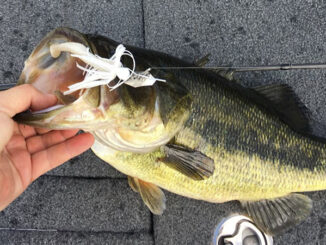Fishing for trophy specks requires more effort and a different approach
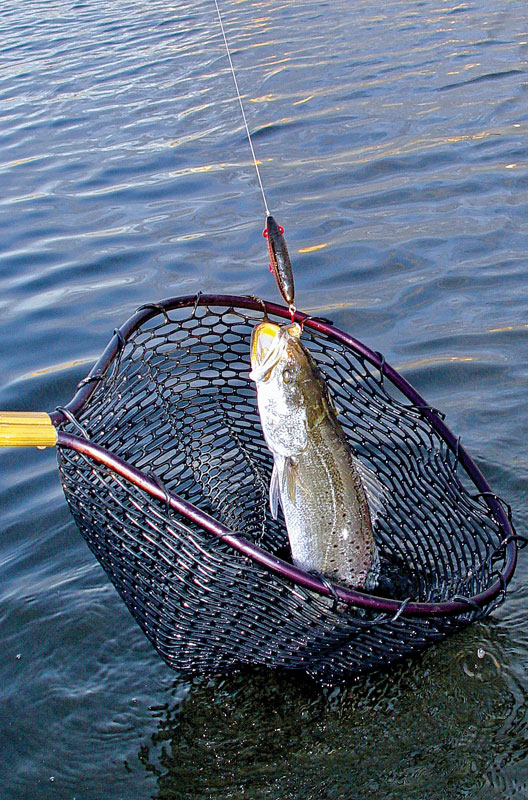
There is an appreciation in Louisiana for speckled trout that have reached the length of 20 inches, because fish of this length are a very small percentage of the total population. This size of fish also differs in behavior from trout of the minimum legal length of 13 inches, which has enabled a growing interest among inshore anglers to focus their energies on the pursuit of 20 inch or longer speckled trout.
The senior class of speckled trout many anglers are pursuing now in Louisiana is just 3 to 4 years old. Biologists have measured the length of 3-year-old trout from 14 inches to 23 inches and 4 year olds from 16 inches to 25 inches. This determination of age is done by counting the rings on a fish’s otolith, which is part of the inner ear.
Unfortunately, this requires killing the fish, so age data collection is typically done by fishery researchers on recreationally harvested fish. In the study, the length of 5-year-old trout measured in the upper 20 inches, but the number of trout in this group dropped precipitously when compared to 4 year old trout. The latest published speckled trout assessment from Louisiana, which was 2019, estimated that just six percent of the trout were 3 years old or older, and the observed landings survey showed that just three percent of the harvested trout were 3 years old or older.
I know of several 25-inch trout that were caught in the MRGO in the last year, which is a trophy these days. Those trout may have measured 20 inches long just a year ago, which makes me think about the value of releasing a 20-inch trout. The new Louisiana regulations for speckled trout, which preserves more of the 3 year olds by limiting the harvest to just two fish 20 inches or longer per day per angler, will give our fishery a size boost.
It will also increase the fertility of the spawning biomass because a 3-year-old trout produces roughly 10 times as many eggs in a spawning season as does a 1-year-old trout.
When I interviewed Angelos Apeitos at the Gulf Coast Research Laboratory in Ocean Springs, Miss., several years ago, he told me that from a fecundity perspective, he values a 17 to 20 inch trout more than a 25 to 27 inch trout. For several reasons, the spawn of a large trout will not result in as many fertilized eggs as a trout in the 17 to 20 inch size range. Therefore, Angelos said that the real stars of the spawn are the 3 year olds, and so he would rather harvest a 5-year-old trout than a 3-year-old trout.
Life is more difficult
It may strike you as odd that very few speckled trout in Louisiana will reach the age of three years and far fewer will reach four years. I believe identifying the environmental differences between our fishery and the fisheries where trout regularly grow to 30 inches in length sheds light on why there is such a disparity in size.
The heaviest trout historically and currently come from places like the Laguna Madre in Texas, the Indian River in Florida, and the Guana Reservoir in Florida. What jumps out to me about these bodies of water is that they are much less environmentally dynamic as compared to the Mississippi River estuary. These big trout waters tend to be shallow bays where there is not a large seasonal change in salinity, there is very little commercial fishing impact like here, the recreational fishing limits are very tight and the environment is not attractive for predators such as large sharks.
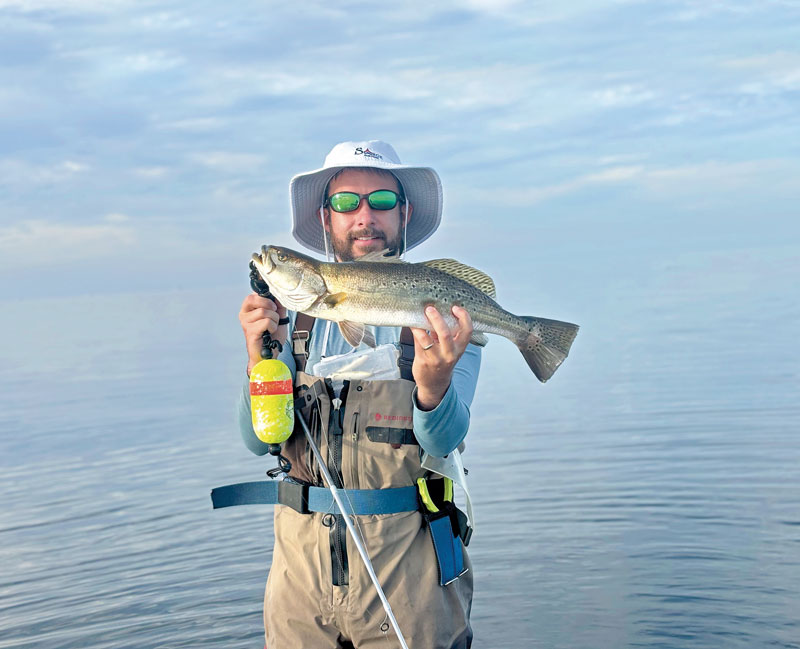
There are also brackish river systems on the east coast which are currently producing equally large trout, such as the Neuse and Pamlico Rivers in North Carolina, so we cannot say that big trout only come from shallow saltwater bays such as the Laguna Madre. However, these rivers are tiny compared to the Mississippi River, which has water volume flows that are hundreds of times higher. So similarly to the shallow bays, they are much less hydrologically dynamic than our estuary.
I believe the most relevant conclusion is that in those big trout waters, the fish deal with less environmental variability and less predation than in inshore Louisiana. Therefore they have the potential for much longer lives. This advantage was obvious in the Gulf Coast Research Laboratory’s speckled trout tanks where the only predictors were other trout and the environmental conditions were carefully controlled. When I was there, I saw healthy trout as heavy as 16 pounds.
Our fishery is full of young trout, but it is currently suffering from a scarcity of older trout. There are a few actions I can take as a recreational angler to increase the age of our trout. These include supporting habitat restoration and responsible commercial fishing regulations and personally harvesting less of the 3-year-old trout. Once a trout reaches a length of over 18 inches, they are much less susceptible to natural predation and therefore the widespread voluntary release of 3 and 4 year old trout will have a supersized benefit on the age of our fish. They’re fun to catch, but it’s meaningful to release them.
Large trout behaviors
Late winter and springtime is when most large trout are caught in Louisiana. In my opinion there are two primary reasons for this. One, during these months more large trout are living in locations with easier accessibility for anglers. Number two, there is more competition over food among the trout and other fish species in these months. In Louisiana, many trout have wintered high in the estuary or inside protected coastal island marshes. These areas concentrate the trout and are closer to launches, roads, and other infrastructure thus satisfying reason number one. By January and February there are very few large white shrimp still in the areas where trout are wintering, so all ages of trout are eating fin fish and non migrating crustaceans until the brown shrimp are large enough to leave the marshes. Therefore, it is easier to trick a large trout into striking a hunk of plastic because they don’t have the luxury of being quite as picky with their food.
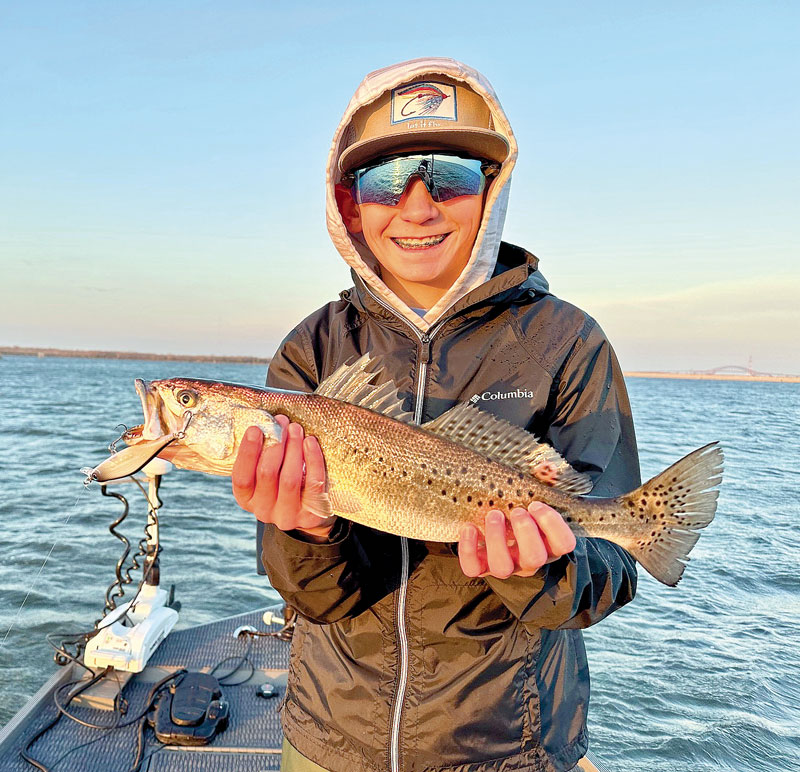
Speckled trout are one of the many species that have genetic instructions for survival when then they leave the egg sack, but they also learn to interpret the world with greater accuracy over their few short years of life. This becomes particularly noticeable when fishing for a 1-year-old trout verses a 3-year-old trout.
For instance, have you noticed that 1-year-old trout can be readily caught beside the boat, while a boat side catch of a 3-year-old trout is an infrequent occurrence. It is my opinion 3-year-old trout are more sensitive to the noises we anglers emit into the water, whether that is dropping things in the boat, loud footsteps, or hull slap from waves. I believe this is one reason that an unpowered, stealthy drift across shallow lakes is a productive strategy for getting strikes from large trout.
The correlation between age and the difficulty of getting a strike appears to continue beyond the 3-year-old trout as was evident in a story John McQueen recently told me. He was on a guided trip in Florida where they were fishing a small area which had a mixture of trout from 20 inches long to approximately 27 inches or longer. The 20-inch trout were readily striking his baits, but the trophy class of trout were mostly ignoring every bait and presentation thrown their way. This does not mean 27-inch trout are uncatchable, it is just an indicator of how age impacts behavior.
Techniques to use
It is common knowledge that 3 and 4 year old trout are more readily caught on finfish or their imitations because a greater portion of their diet has shifted from shrimp to finfish. We also need to consider the possibility that using a finfish imitation bait is only half of a successful formula and the other half is the action we impart into the bait. If a live croaker needs to be hooked properly to convince a 3-year-old trout to strike it, we can guarantee that the presentation of an artificial bait is critically important to getting a strike.
To further complicate our mission is the fact that trout prefer different presentations on a seasonal or even daily basis. This means that we need to be proficient at imparting a range of motion to our artificial lures, such as mimicry of an escaping bait fish or one that is struggling to stay afloat. We also need to have this proficiency across of range of lure sizes and body styles. In addition to jigs, I would recommend having the ability to fish lipped jerkbaits in floating and suspending versions, lipless twitch baits in suspending and sinking versions, and the Paul Brown lures. At a minimum, you should have these lures in small and medium sizes and in a dark green or olive green color and a color pattern with pink.
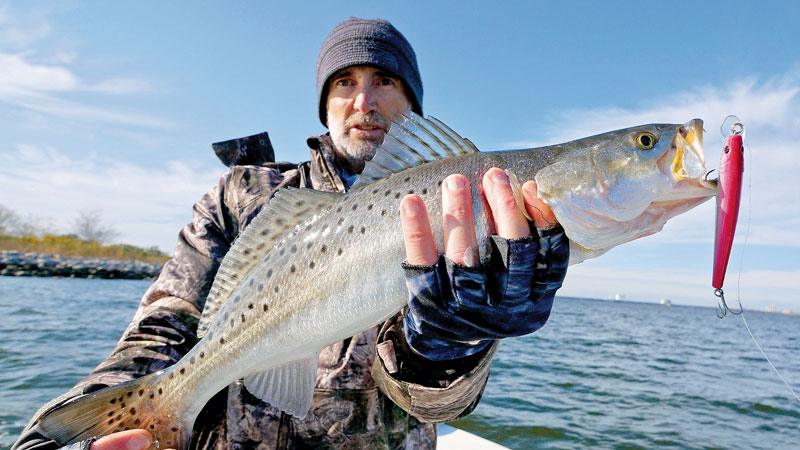
The best advice for catching 3 and 4 year old trout in the spring is to throw a topwater lure all day. This tactic may not garner as many strikes, but it is the most likely path to getting the one big bite that produces a trophy trout. I struggle with following this advice partly because my wrists eventually give out. Topwater presentations are most effective when the trout are near the surface either because they are feeding there or the water is shallow. The confounding factor is that trout tend not to feed on the surface under bright conditions, which makes the topwater bait most effective in the morning and evening and on cloudy days. Therefore, I try to at least cover those times with a lot of topwater action.
In conclusion, if you want to consistently catch 3 and 4 year old trout in Louisiana, do not spend all day fishing where you catch the 1 and 2 year old trout. Instead fish the gnarly structures, the large channels, large shallow lakes, and the barrier islands. It also helps to lower your expectation about the number of trout you will catch and focus on achieving a half dozen big bites.

